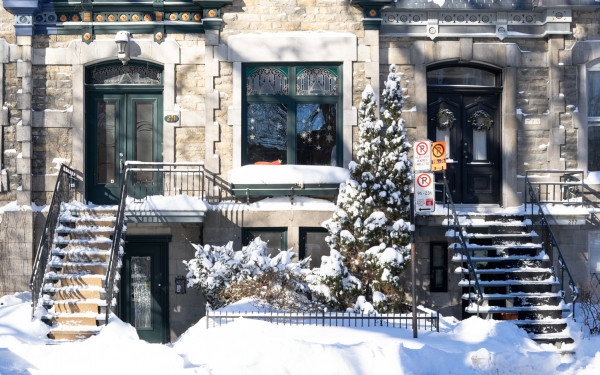A Modern Urban Jungle
Field of Possibilities Brings Green to Industrialized Area
In the corner of the Mile End, behind the industrial buildings and near the train tracks residents often cross illegally, there’s a stretch of land locals refer to as the “Champ des Possibles.”
It’s not an especially dazzling piece of land, but for the residents stopping by for lunch or with children, it’s a refuge from the concrete surroundings.
“It’s important to make sure there’s a real point of contact between nature and people who live in urban environments,” said Marke Ambard, president of the citizen’s association Les Amis du Champ des Possibles.
The Champ des Possibles is made up of two parts, a large 1.5-hectare plot that is now legally designated as a park and a thinner strip outlining a southern part of the Canadian Pacific railroad that crosses the city.
Everyone considers that thinner portion to be part of the park and it wasn’t until last fall, when CP bulldozed the land for a rail switch, that residents were reminded how unprotected it actually is.
In October, some friends of the Champ found CP tracks hastily placed over mud, construction vehicles stood by the fence. The green grass, albeit still on contaminated land, had been razed.
Within 12 hours the friends of the park mobilized, calling out to residents, media and friends of friends. It wasn’t long before CP sent out an apology.
“It was an accident,” they tweeted. “We thought we owned the land.”
That’s not a far-off idea. Ownership of the Champ has always been a bit confusing.
Ambard says the field was bought by the city in 2006 from Canadian Pacific Rails, but it was pretty much abandoned for decades before that. It wasn’t until artists and residents started using the space for creative and leisurely endeavours that a plan for the Champ came into creation.
“We all thought that CP owned it at that point,” Ambard said.
Around that time the artists mobilized against city plans to industrialize the Champ. A Banner of Peace symbolic of the Roerich Pact (which concluded that defence of culture is of paramount importance) was installed and Les Amis du Champ des Possibles was created.
Since then, the city has changed the zoning of the larger part to a greenspace and park. Municipal parks become the responsibility of the borough so the Plateau Mont-Royal co-manages with the Amis du Champ.
The Amis are responsible for events on site, maintaining links with community and making sure residents’ voices are heard. The ideas for innovating the site and biodiversity come from residents.
The arm of the park—the part razed by CP—remains a no-man’s land in terms of designation. It isn’t a park, and promises were made after the CP debacle to protect the land.
CP says it’s working with the citizen group to remedy the issue, but there’s no word on how or how much.
The park is still in a transitional phase. Working out the best way to decontaminate the former rail scrap yard is priority number one.
The Amis have brainstormed adding benches and pathways, even gazebos. Art installations are still encouraged, as long as they don’t permanently change the nature of the park.
Ambard also brought up the idea for a wetland. The borough hasn’t approved it, but a small wetland could be used to filter water, catch rain and help increase the biodiversity of the site.
That means moving the plant design away from a lot of invasive species like weeds that crowd out other plants, towards planting native ones to attract pollinators, butterflies and birds.
“From the beginning it’s always been understood that we were thriving to be innovative in our approach to decontamination,” said Ambard.
“Not just by digging up all the dirt and dumping it somewhere else, but using different natural approaches.”
One approach is bioventing—covering it up and waiting—or using plants, microbes or mushrooms to take out contaminants.
The group is in the process of building up arguments and figuring out which to present to the province.
The ongoing evolution of the site is supposed to also encourage it to become more diverse in function.
Meanwhile the space continues to be primarily used as a shortcut to the metro. People in the area will cut through the park and then illegally through the CP tracks to avoid a 20-minute detour to get across.
A Mile End woman is contesting a $146 fine she received in 2011 after crossing over the tracks. Several crossings exist in the area. Residents have been demanding level crossings for years; NDP leader Tom Mulcair raised the issue when he was a representative for Outremont in 2010.
Further north, community groups are trying to save the Parc des Gorilles at the corner of Beaubien St. and St. Urbain St. where trees were cleared in the night by a condo developer without city permission.
Like the Champ, the area was owned by CP until 2013 and served as the last green space in the industrial area. Residents only learned the plot had been sold when the trees were uprooted and asphalt lain.
Since then, Les Amis du Parc des Gorilles have been petitioning the city.
In September, Montreal set up cinder blocks to protect the area for a future park, but the project will have to wait a few years.

_900_675_90.jpg)
_600_832_s.png)

_600_375_s_c1.png)


